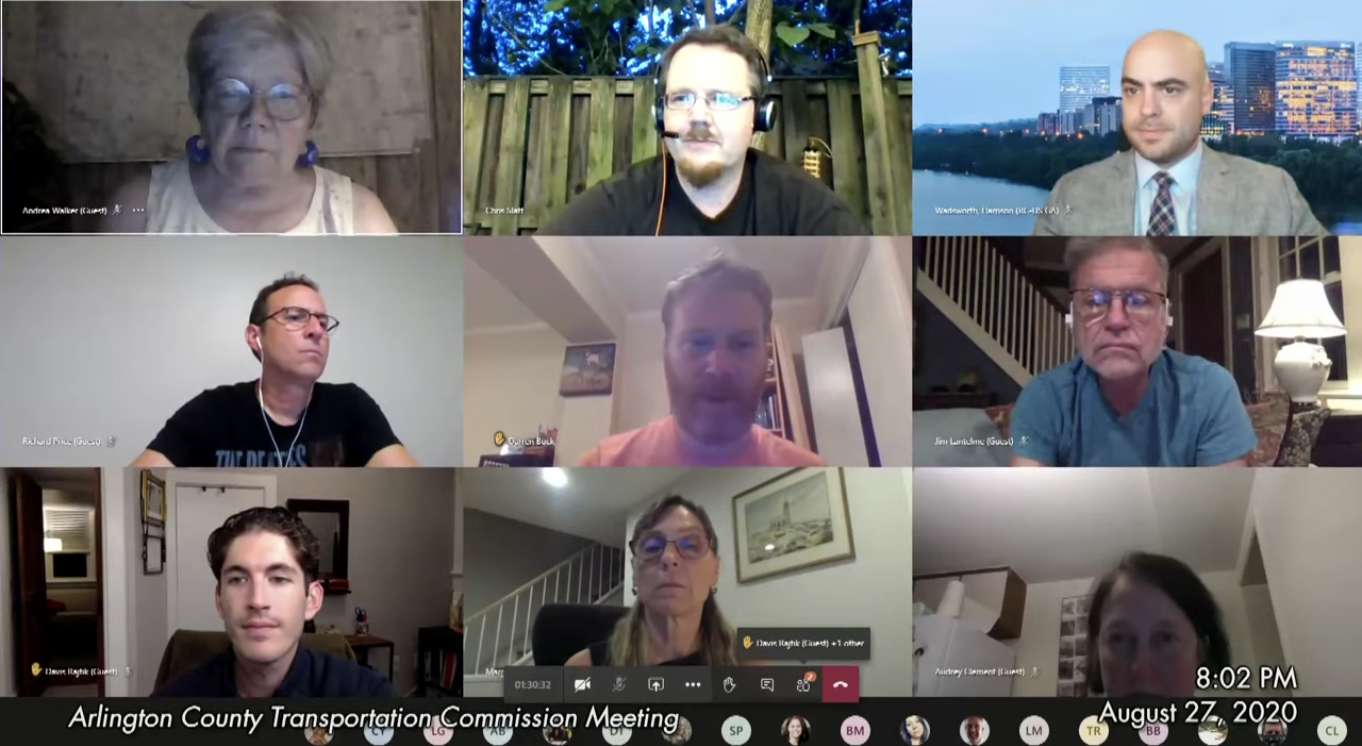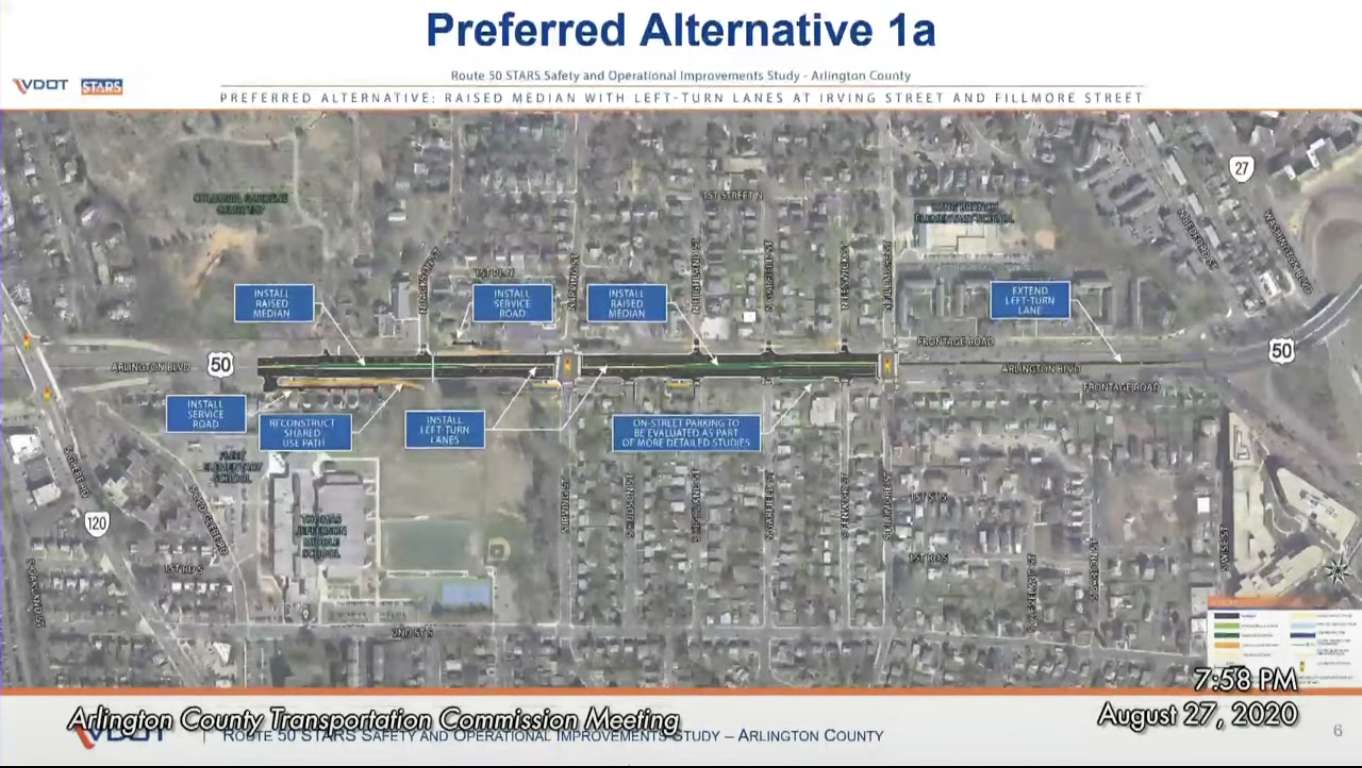The Arlington Transportation Commission voted 8-2 at its meeting last week to not recommend that the County Board submit a funding application for proposed changes to Route 50.
The project would, among other changes, widen the roadway to add dedicated turn lanes.
The application requests $25.1 million from the Virginia Department of Transportation‘s (VDOT) SMART SCALE funding program to make improvements to Route 50, also known as Arlington Blvd, where it runs between Glebe Road and Fillmore Street.
This stretch of road, according to VDOT, had 247 crashes on it with 61 total injuries between 2014 and 2018.
“This segment of Route 50 experiences congestion in the morning and evening peak periods and a high number of crashes,” VDOT said in an April presentation. “Route 50 averages 62,000 vehicles a day within the study limits.”
Potential changes would come from recommendations made in a yearlong VDOT study of this area. These include adding new left-turn lanes and expanding current ones, as well as installing raised medians in certain high crash areas.
Constructing a new service road where Route 50 runs eastbound between Glebe and N. Jackson Street, and reconstructing a shared-use path in the section, were also recommended by VDOT.
The commission did pass a motion to recommend the County Board direct the County Manager to lay plans for a Route 50 corridor study between Roosevelt Bridge and Fairfax County.
Members voting against VDOT’s recommendation cited issues with the department’s study — including what they said was a limited scope, a failure to consider how changes would impact speed in this section of road, and a failure to account for more cars driving this road — as reasons for their vote.
Commissioner Darren Buck, the most outspoken critic of VDOT’s recommendations during the meeting, said the fact that VDOT’s study only looked at the area between Glebe and Fillmore and not Route 50 as a whole was among his greatest concerns about supporting the plan.
“I do not want to apply to fund this fundamentally flawed project to fill pressing local needs when a more comprehensive study of the corridor is pushed off indefinitely,” Buck said. “I do not think [the state should be] sinking $25 million into a spot improvement that basically determines how the rest of the corridor is going to look when we still haven’t addressed that long-standing open community question of how the rest of the corridor should look and operate.”
Commissioner Margarita Brose, as one of two commissioners voting for recommending the funding application, said the already high number of crashes in the section outweighed concerns over the project’s cost and a widening of the roadway.
“The safety concerns really weigh heavily on me,” Brose said. “I understand it’s a lot of money for a short period but we’ve seen the statistics on the number of cars that go through there and the crashes.”
VDOT said the study’s recommendations were primarily focused on improving the road’s safety.
“The safety aspect is one of the key things that led us to try and find a solution or a way to reduce those crashed,” VDOT said. “That’s one of the key motivating things that got us to start the study and to come up with the alternatives that we reviewed.”
Still, commission members questioned the actual safety added by VDOT’s recommendations.
“We are adding lanes for cars and making the highway more divided so that cars will go faster,” Commissioner Taylor Reich said. “As a result of this, I am unconvinced this project will improve safety, especially for pedestrians.”
VDOT said its plan leaves three through lanes in each direction on Route 50, which is similar to its current state. The road widening, she said, is to allow room for new left turn lanes.
If the County Board approves a SMART SCALE funding application, there is no guarantee the project would receive the money. VDOT describes SMART SCALE funding as highly competitive.
Images via Arlington County




